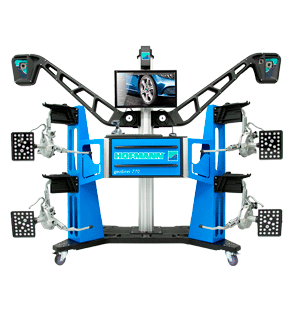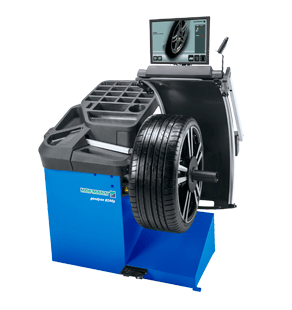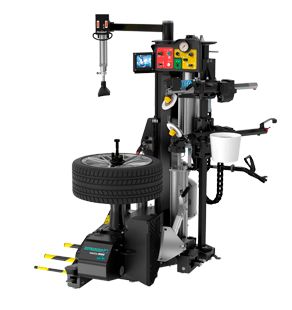What is a TPMS Sensor?
At Hofmann, we understand the importance of vehicle safety systems in maintaining your car's performance and protecting you on the road. With decades of experience providing automotive equipment to repair shops worldwide, we're well-positioned to explain one of the most critical yet often overlooked safety features in modern vehicles. In this article, you'll learn exactly what a TPMS sensor is, how it works, and why it's essential for your vehicle's safety and efficiency.
Understanding Your TPMS Sensor
A TPMS sensor, or Tire Pressure Monitoring System sensor, is a small electronic device that continuously monitors the air pressure inside your vehicle's tires. This onboard safety system alerts drivers when tire pressure becomes dangerously low or high, helping prevent accidents and tire-related failures before they occur.
The sensor itself is typically a small battery-powered device mounted either inside each tire or attached to the valve stem. These sensors collect real-time pressure data and transmit it to your vehicle's computer system, which then displays the information on your dashboard.
Three Types of TPMS Sensors
There are three main types of TPMS sensors, each with its own advantages and limitations:
-
Direct TPMS: Uses physical pressure sensors inside each tire to provide real-time, accurate readings. These sensors are mounted either to the valve stem or strapped to the wheel's drop center. Direct systems provide precise measurements for each individual tire.
-
Indirect TPMS: Relies on the Antilock Braking System (ABS) and wheel speed sensors to detect pressure changes based on wheel rotation speed. When a tire loses pressure, its diameter slightly decreases, causing it to rotate faster than properly inflated tires. The indirect system detects these rotation differences.
Hybrid TPMS: Combines features of both direct and indirect systems, using pressure sensors along with data from the ABS system for enhanced accuracy and redundancy. This dual approach provides more reliable monitoring with backup systems.
Each system has distinct characteristics that impact performance and maintenance requirements:
-
Direct TPMS Pros: Provides accurate, real-time readings for each tire; can detect slow leaks early
-
Direct TPMS Cons: More expensive; sensors have limited battery life; requires specific maintenance
-
Indirect TPMS Pros: Less expensive; no battery replacement needed; fewer components to fail
-
Indirect TPMS Cons: Less accurate; cannot identify which specific tire is underinflated; requires calibration after tire rotations
Why is TPMS Important for Vehicle Safety?
TPMS sensors play a crucial role in preventing accidents and tire-related failures. Properly inflated tires significantly improve your vehicle's braking distance, handling, and overall stability. When tires are underinflated, they generate more heat due to increased friction and flexing of the sidewalls, which can lead to sudden blowouts at high speeds.
The National Highway Traffic Safety Administration (NHTSA) estimates that maintaining proper tire pressure reduces the chance of a crash due to tire issues by 55%. Additionally, correct tire pressure helps vehicles maintain traction in various weather conditions, particularly during rainy or snowy driving.
Beyond safety, TPMS sensors provide significant fuel efficiency and cost-saving benefits. Underinflated tires increase rolling resistance, forcing your engine to work harder and consume more fuel. According to the U.S. Department of Energy, properly inflated tires can improve fuel economy by up to 3%. This might seem small, but over your vehicle's lifetime, it translates to significant savings.
Maintaining correct tire pressure extends tire lifespan by promoting even tread wear. Tires are a substantial investment, and premature replacement due to irregular wear patterns can be costly. By alerting you to pressure issues early, TPMS helps prevent expensive tire damage and unexpected roadside emergencies.
How Does a TPMS Sensor Work?
The TPMS monitoring and alert process begins with sensors measuring the air pressure inside each tire. In direct TPMS systems, these sensors collect data and transmit it to the vehicle's Electronic Control Unit (ECU). If the system detects a significant deviation from the recommended tire pressure—typically 25% below the manufacturer's specification—a warning light appears on the dashboard.
This warning light is usually shaped like a tire cross-section with an exclamation point in the middle. Some advanced systems may also display the actual pressure readings for each tire on the vehicle's information screen, allowing drivers to identify exactly which tire needs attention.
TPMS sensors communicate with the vehicle differently depending on the system type. Direct TPMS sensors transmit data wirelessly using radio frequency signals (usually at 315 or 433 MHz) to a central receiver in the vehicle. Each sensor has a unique ID code that the system recognizes, allowing it to distinguish between all four tires.
Indirect TPMS systems work differently, analyzing wheel speed variations through the ABS sensors to estimate tire pressure changes. When a tire loses pressure, its effective diameter decreases slightly, causing it to rotate faster than properly inflated tires. The system detects these rotation differences and triggers the warning light when significant variations occur.
Common Issues and Maintenance for TPMS Sensors
Despite their reliability, TPMS sensors can experience problems. Here are the most common issues:
-
Low battery life in direct TPMS sensors, which typically last 5-7 years
-
Sensor damage due to corrosion, impact, or improper handling during tire changes
-
Signal interference from other electronic devices
-
Sensor valve stem leaks or cracks
-
Internal component failures due to age or environmental conditions
When issues arise, your dashboard may display various warnings. The standard TPMS warning light indicates low pressure in at least one tire. If this light flashes a number of times before staying solid, it typically indicates a system malfunction rather than just low pressure.
Some vehicles require TPMS recalibration after tire rotations, replacements, or seasonal tire swaps. This process resets the system and allows it to learn the new position of each sensor. Without proper recalibration, the system may display inaccurate information or continuous warning lights despite properly inflated tires.
How to Troubleshoot and Prevent TPMS Issues
If your TPMS light activates, first check your tire pressure with a reliable tire pressure gauge. If all tires are properly inflated but the warning light remains on, the system may have a malfunction. In such cases, consider these diagnostic steps:
-
Drive the vehicle for about 10 minutes at speeds above 20 mph, which may allow the system to reset
-
Use an OBD-II scanner or specialized TPMS tool to read error codes
-
Check for interference from nearby radio transmitters or electronic devices
-
Inspect for visible damage to valve stems or sensors
-
Have your vehicle professionally diagnosed if the problem persists
To maintain TPMS sensor longevity, follow these best practices:
-
Replace TPMS sensor batteries or entire sensors every 5-7 years
-
Have sensors professionally inspected when changing tires
-
Use proper torque specifications when installing valve stems
-
Apply anti-corrosion compounds to metal valve stems
-
Be cautious with tire sealants, as some can damage sensors
The TREAD Act
The implementation of TPMS in most vehicles stems from the TREAD Act (Transportation Recall Enhancement, Accountability and Documentation) passed in the United States in 2000. This legislation requires that all vehicles sold in the U.S. after September 1, 2007, include a system to warn drivers about underinflated tires.
The law came in response to a series of fatal accidents involving tire failures, highlighting the critical safety role that proper tire maintenance plays. Today, this technology has become standard worldwide, saving countless lives through prevention of tire-related accidents.
Conclusion
TPMS sensors represent a vital safety system in modern vehicles, constantly monitoring tire pressure to prevent accidents, improve fuel efficiency, and extend tire life. Understanding how your TPMS works and recognizing warning signs of potential issues helps you maintain your vehicle properly and stay safe on the road.
Regular monitoring and professional maintenance of your TPMS system ensure it continues functioning correctly. Remember that while the TPMS provides crucial warnings, it doesn't replace regular tire pressure checks with a quality tire gauge.
For professional automotive equipment to properly service and maintain TPMS systems, explore our line of tire changers designed to safely work with modern wheels and their sensitive electronic components.
How Alignment Services Increase Customer Retention for Tire Shops
The ROI of 3D Wheel Alignment Systems
Hands-On Innovation: How EZ-Toe™ Simplifies Toe Adjustments
Wheel Alignment: A Complete Guide
How to Choose the Best Tire Machine for Your Shop
Symmetric vs Asymmetric Lift: The Key Differences Every Shop Should Know
How to Use a Tire Machine: A Step-by-Step Guide for Safe Operation


 Wheel Aligners
Wheel Aligners
 Wheel Balancers
Wheel Balancers
 Tire Changers
Tire Changers
 Lifts
Lifts



